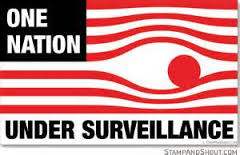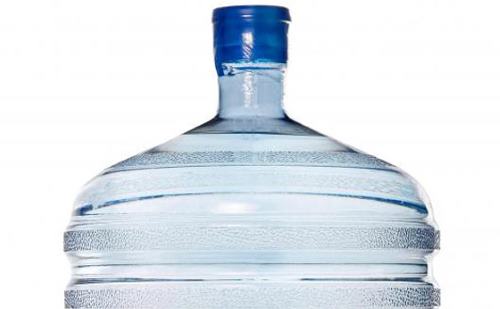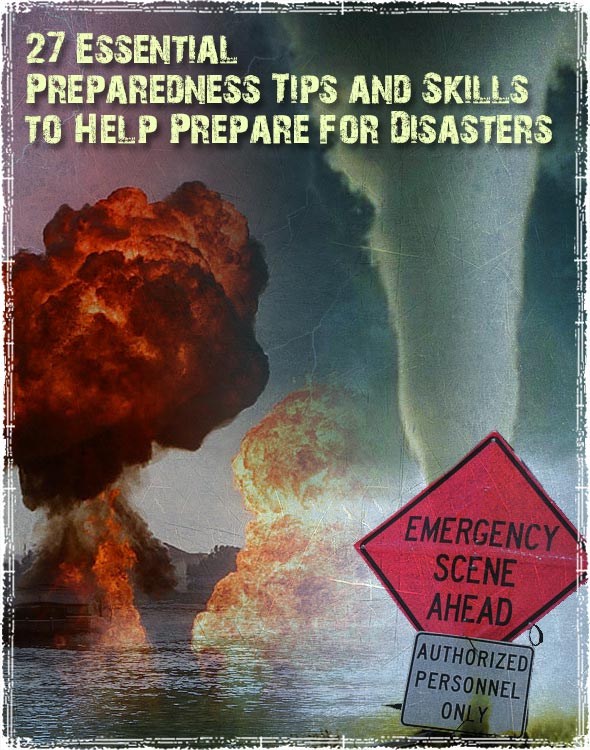On
a clear morning in May, Ron Douglas left his home in exurban Denver,
eased into his Toyota pickup truck and drove to a business meeting at a
Starbucks. Douglas, a bearded bear of a man, ordered a venti
double-chocolate-chip Frappuccino — “the girliest drink ever,” he called
it — and then sat down to discuss the future of the growing survivalist
industry.
Many
so-called survivalists would take pride in keeping far away from places
that sell espresso drinks. But Douglas, a 38-year-old entrepreneur and
founder of one of the largest preparedness expos in the country, isn’t
your typical prepper.
At
that morning’s meeting, a strategy session with two new colleagues,
Douglas made it clear that he doesn’t even like the word “survivalist.”
He believes the word is ruined, evoking “the nut job who lives out in
the mountains by himself on the retreat.” Instead, he prefers
“self-reliance.”
When
prompted by his colleagues to define the term, Douglas leaned forward
in his chair. “I’m glad you asked,” he replied. “Take notes. This is
good.”
For
the next several minutes, Douglas talked about emergency preparedness,
sustainable living and financial security — what he called the three
pillars of self-reliance. He detailed the importance of solar panels,
gardens, water storage and food stockpiles. People shouldn’t just have
72-hour emergency kits for when the power grid goes down; they should
learn how to live on their own. It’s a message that Douglas is trying to
move from the fringe to the mainstream.
“Our
main goal is to reach as many people and get the word out to as many
people as we can, to get them thinking and moving in this direction,” he
said. “Sound good?”
The
preparedness industry, always prosperous during hard times, is thriving
again now. In Douglas’s circles, people talk about “the end of the
world as we know it” with such regularity that the acronym Teotwawki
(tee-ought-wah-kee) has come into widespread use. The Vivos Group, which
sells luxury bunkers, until recently had a clock on its Web site that
was ticking down to Dec. 21, 2012 — a date that, thanks to the Mayan
calendar, some believe will usher in the end times. But amid the
alarmism, there is real concern that the world is indeed increasingly
fragile — a concern highlighted most recently by
Hurricane Sandy.
The storm’s aftermath has shown just how unprepared most of us are to
do without the staples of modern life: food, fuel, transportation and
electric power.
The
survivalist business surged in the wake of 9/11, when authorities
instructed New Yorkers to prepare disaster kits, learn how to seal doors
and vents with duct tape and be ready to evacuate at any time.
Threat-level warnings about possible terrorist attacks kept Americans
rattled for years, and were followed by various disasters of other
types: the financial meltdown, Hurricanes Katrina and Ike, drought,
blackouts and concerns over everything from rising sea levels to Iran’s
nuclear program.
Late
last year, Douglas and his partners formed the Red Shed Media Group, a
single corporate home for several endeavors: the Self Reliance Expo,
conventions that Douglas founded in 2010, dedicated to showcasing
survival gear and skills; Self Reliance Broadcasting, an Internet-based
channel devoted to the cause; and an entity that controls the rights to
publishing “Making the Best of Basics,” a popular survivalist handbook.
The name Red Shed was symbolic for Douglas. “When your grandfather went
and did a project,” he told me, “he went out to the red shed and pulled
out all the tools he needed for the job.” Douglas wants his virtual red
shed to be a single place where people can get all the preparedness
information they need. Five expos this year have drawn 40,000 people who
pay $10 each. The radio network has logged more than two million
podcast downloads; in one day alone in July, it reported nearly 90,000
downloads. The book, which was first published in 1974, includes recipes
for everything from wild pig (“they are easy to prepare”) to dove pie
(“simmer for one hour or until doves are tender”). Douglas said it had
sold about 20,000 copies this year.
But
the goal isn’t just to sell to the same old preparedness crowd. Red
Shed wants to attract liberals and political moderates to a marketplace
historically populated by conservatives and right-wing extremists. “It’s
not the end of the world,” Douglas told me last spring, making a bold
statement for someone in his industry. “It’s not doomsday.” It’s about
showing the gun-toting mountain man in his camouflage and the suburban
soccer mom in her minivan that they want the same thing: peace of mind.
“We don’t say, ‘Hurry up and buy your stuff because Obama is going to
ruin the country,’ ” Douglas said. “We don’t get into the political
crap. We just want to teach people the lifestyle.”
The first thing
you notice about Douglas’s neighborhood in Frederick, Colo., about 30
miles north of Denver, is that it’s not particularly noticeable. He
doesn’t have a mountain stronghold or a 20-acre spread. He doesn’t have a
bunker or anything resembling a barn. Instead, he, his wife, Heather,
and their six children, ages 4 to 16, inhabit a typical American
suburban home. There’s an in-ground sprinkler system and a play
structure in the backyard. The siding on the house is an innocuous
beige. Pink tulips bloom in the flower beds come spring. The children
can walk to school.
The
fact that Douglas not only told me where he lives but also invited me
to visit him would be considered a huge mistake by many in the prepping
world. Revealing your location runs the risk of compromising your Opsec,
or “operations security,” an abbreviation coined by the military and
adopted by survivalists. “I don’t even mention what state I live in,”
James Wesley Rawles, the editor of
SurvivalBlog.com,
a popular prepping Web site, told me. “All I’m at liberty to discuss,
with consent of my wife, is that I live somewhere west of the Rockies.”
For
Rawles and others, it’s a matter of security. Revealing your location
gives the Unprepared a road map to the stockpiles of the Prepared, in
the event of Teotwawki. “I don’t want to wake up and find out that I’m
the go-to guy — literally,” Rawles says.
If
civilization breaks down, Douglas’s house is definitely where you want
to be. In his home office — the de facto headquarters for Red Shed’s six
shareholders and two independent contractors — he keeps not only his
iPad and his MacBook but also a ham radio and a C.B. radio. In his
basement, there is roughly a year’s supply of wheat, rice and other
staples. And outside, he tries to keep a year’s supply of chopped wood
and, in his garage, 375 gallons of water.
If
he needs to leave, Douglas has modified a Chevy Suburban so that it can
travel 850 miles between fill-ups. If he stays, he’s ready to protect
his family and his provisions. Douglas can’t even remember how many guns
he owns. “Twelve?” he guessed when I asked. “Not as many as most.” But
he knows his favorite: the Governor, a Smith & Wesson handgun that
fires shotgun shells. “This is the home defender here,” he said. “You
just point it in the right direction, and it’s over.”
Yet
unlike others in his industry, Douglas doesn’t waste energy worrying
about things like Opsec. And though he owns guns, he doesn’t push gun
ownership.
At
a meeting at an empty Hooters restaurant in Colorado Springs this year,
Douglas listened impatiently as a salesman tried to get him to buy some
ads on a local radio station for a coming expo. He was saying he could
offer the same rates for a typical gun show. Douglas told the man that
he wasn’t getting it at all. “I’m not just a gun show,” Douglas said to
him.
The salesman’s confusion
must be forgiven. The last time anything like Douglas’s expos hit
convention halls was the 1990s. Y2K was coming. The threat of computers —
and everything else — failing was a boon for a show called the
Preparedness Expo. Civil rights organizations denounced the early
incarnations of these gatherings, organized by a Utah man named Dan
Chittock, as havens for political extremism and hate, an image that
Chittock disputed even as he seemed to invite it. His biggest draw at
the expos, Chittock told me, was James Gritz, known as Bo, a leader of
the right-wing survivalist movement who offered paramilitary training
and promoted Idaho as a refuge for antigovernment patriots. Dave Duffy,
the editor and publisher of Backwoods Home Magazine, said: “I pulled out
of Dan’s shows after awhile. It was conspiracy stuff. And it was making
my magazine, along with the other vendors, look bad.”
Y2K
offered a clearer threat; attendance at the expos doubled. But when the
millennium dawned without widespread computer meltdowns, Chittock’s
audience disappeared, and the expos disbanded. “It was kind of like
crying ‘wolf,’ ” Chittock says. “Nobody wanted to hear it anymore.” Many
small survivalist companies folded, while others struggled to carry on.
Sun Ovens International, an Illinois company that manufactures
solar-powered ovens, had sales fall to less than $200,000 in 2000 from
$1.6 million a year earlier — a staggering 88 percent decline made worse
by the fact that the company got stuck with $100,000 in unpaid invoices
after the Y2K bust. “When Y2K was a nonevent, almost everybody in the
preparedness industry declared bankruptcy,” Paul M. Munsen, the
company’s president, says.
Sun
Ovens limped along, critically wounded. “I refinanced my home three
different times just to eat,” Munsen says. But in time, business began
to improve, thanks in part to Barack Obama’s presidential victory four
years ago, which alarmed many on the right worried about everything from
his economic policies to his middle name. “The day after the election
was one of the best sales days we ever had,” Munsen says. “Some people
were just so upset about the election that they said, ‘We had better be
prepared.’ ”
Ron
Douglas wasn’t a part of the preparedness gold rush of the 1990s. He
was working at the time as a corrections officer in Texas before moving
to Colorado, where he bought a Critter Control franchise. Not long after
Sun Oven sales began to rise, Douglas got out of the pest-control
business. As a Mormon, he was taught the virtues of living a prepared
life. He had been stockpiling food for years. But now, Douglas was
beginning to sense a larger void — and a commercial opportunity — that
needed to be filled.
He
held his first Self Reliance Expo in November 2010 and tried to put a
new spin on survivalism. Instead of lining up speakers to offer
right-wing screeds, Douglas organized a homemade bread bake-off. The
prize: a new wheat grinder. The products — and even the vendors at times
— may have been the same from the expos of the past. But the packaging
felt different, less threatening. Duffy says he noticed it immediately:
“It was apparent right off the bat — no nut cases.”
Scott
Valencia, a business developer from the video-game industry who formed
Red Shed with Douglas last year and owns a stake in the company, helped
see to that. He instructed vendors to avoid fear tactics and improve
their displays while also making sure that the venues were welcoming and
well lighted with wide aisles — the better to fit baby strollers and
families. There was to be no more doom and gloom. “We lost some vendors
when we told them that we weren’t doing it anymore — and Ron worried
about that,” Valencia says. “But I said, ‘You’re going to pick up new
ones.’ And we have.”
At an expo in
May in Colorado Springs, at least a hundred people were waiting to get
inside when the doors opened for the day. Some bought water filters;
others learned fire-building skills. An audience gathered at the main
stage to listen to Alan Madison talk about his reality TV show on the
National Geographic Channel, “Doomsday Preppers,” whose second season
began this month. “To me, it’s like a giant American studies project,”
Madison, an executive producer of the show, told me. “I think it
captures America at the beginning of the 21st century.” By the time the
first season finished in April, the show had become the channel’s
highest-rated series ever.
Not
everyone at the expo was a fan of “Doomsday Preppers.” Terry Browning, a
41-year-old Army veteran, said the show unfairly depicts people like
him as “militant psychos.” “Half the people here are probably not even
thinking about the bunker underground or the 10,000 rounds of ammo —
stuff like that,” he told me. “Most of these people just want to be safe
in their homes with enough supplies to get them through whatever may
be.”
In
other words, they’re a lot like Linda Thrower, a home-health nurse from
New Mexico. She and her husband, Troy, started prepping only recently,
and they hesitated to even attend the expo. “We didn’t want to be
inundated with a bunch of way-out-there radical followers,” she told me.
Yet once inside, she was pleased with what she found. Yes, there was
ammunition for sale and classes to help people obtain concealed-weapons
permits. But Thrower, 59, left the expo that weekend with canned cheese,
baking supplies for her Sun Oven and some practice in emergency
suturing, the subject of one of the expo’s many seminars. “I think
that’s a good thing for me, as a nurse, to be able to do,” she said.
“Because if we have a disaster, whether it’s natural or man-made,
there’s not going to be enough doctors.”
Just
across the aisle from the Tea Party booth at the expo stood EnerHealth
Botanicals, a Colorado company whose signature product is a “super green
energy drink” that is organic, gluten-free, caffeine-free and
G.M.O.-free. As a founder of the company in 2005, Steve St. Clair,
EnerHealth’s chief executive, was focused on health-minded liberals. In
the spring of 2011, however, St. Clair bought a booth at one of
Douglas’s expos. “People just ran over us,” St. Clair told me. “They
just loved the stuff.”
Since
then, EnerHealth has sold products created for the preparedness market,
especially its Survive2Thrive Organic Preparedness Pail. It sells for
$270 and consists of 40 days’ worth of vacuum-packed organic food,
including five pounds of rolled oats, four pounds of millet, three
pounds of garbanzo beans and so on. Business at EnerHealth doubled last
year. “And it looks like it may do it again this year,” St. Clair said.
Sales were brisk before Hurricane Sandy. And natural disasters always
help the preparedness industry.
The
week Hurricane Sandy hit New York and New Jersey, Douglas was getting
bombarded with e-mail from exhibitors asking him to organize an expo in
the Northeast. To date, the farthest east he has been is Hickory, N.C.
The demographic for preparedness generally tilts Western and rural. But
since Sandy, Douglas has been considering putting on an expo in New York
or New Jersey. “This is exactly what we’re trying to prepare people
for,” he told me. “Everybody talks about doomsday, the end of the world —
apocalypse nonsense. This is New York’s doomsday right now.”
One night last
spring, Douglas invited friends and neighbors to his house in Frederick
for what he called a “modern-day barn-raising.” The tasks for the night
included clearing the back corner of the lot, erecting new garden boxes
for the season and chopping wood. Everyone was well fortified for the
work; Heather, Ron’s wife, had cooked a large dinner of spare ribs in a
Sun Oven. And the weather was perfect for the chores. Within 90 minutes,
the garden boxes were ready. Heather served homemade root beer and
store-bought ice cream, and the men gathered in the driveway to talk as
the sun set behind the Rocky Mountains.
“You’re coming to my house next week,” Chad Tone, one of the men, told Douglas, joking.
For
months, Tone had been talking to Douglas about wanting to be more
prepared. He bought canned goods at Costco, and he figured his family
could live off them for months, if necessary. But Tone wasn’t canning
food or growing his own food; he had no garden. Douglas knew Tone still
had a lot of work to do and, standing in the driveway, he asked his
friend a cosmic question of great importance.
“Are you ready?” Douglas said.
“No,” Tone replied.
Douglas just shook his head and smiled. “Gotta get ready,” he said.





